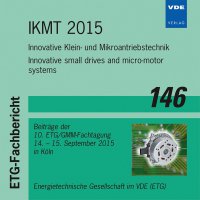Simulation and analysis of the winding inductances of small electrical motors for a sensorless control method
Konferenz: IKMT 2015 - 10. ETG/GMM-Fachtagung Innovative Klein- und Mikroantriebstechnik
14.09.2015 - 15.09.2015 in Köln, Deutschland
Tagungsband: IKMT 2015
Seiten: 5Sprache: EnglischTyp: PDF
Persönliche VDE-Mitglieder erhalten auf diesen Artikel 10% Rabatt
Autoren:
Kleen, Stephan; Nienhaus, Matthias (Universität des Saarlandes, Lehrstuhl für Antriebstechnik, Saarbrücken, Germany)
Inhalt:
Motor controllers that work without rotor position sensors such as encoder or magnetic field sensors are either based on back electromotive force (EMF) detection or on the exploitation of motor anisotropies. The latter is caused by the variation of the electromagnetic field quantities depending on the rotor position. Direct flux control (DFC) is one method which measures the star point potential at particular points in the PWM control cycle, thereby determining the inductance ratios between the winding phases and calculating the position of the rotor from this. DFC is suitable in particular for BLDC and BLAC motors with accessible star point and allows a servo operation from standstill up to high speeds. This article deals with simulative research on geometry, material and state dependent variation of motor signals like flux linkage, induced voltage and inductance ratios in terms of an evaluation with the DFC method.


